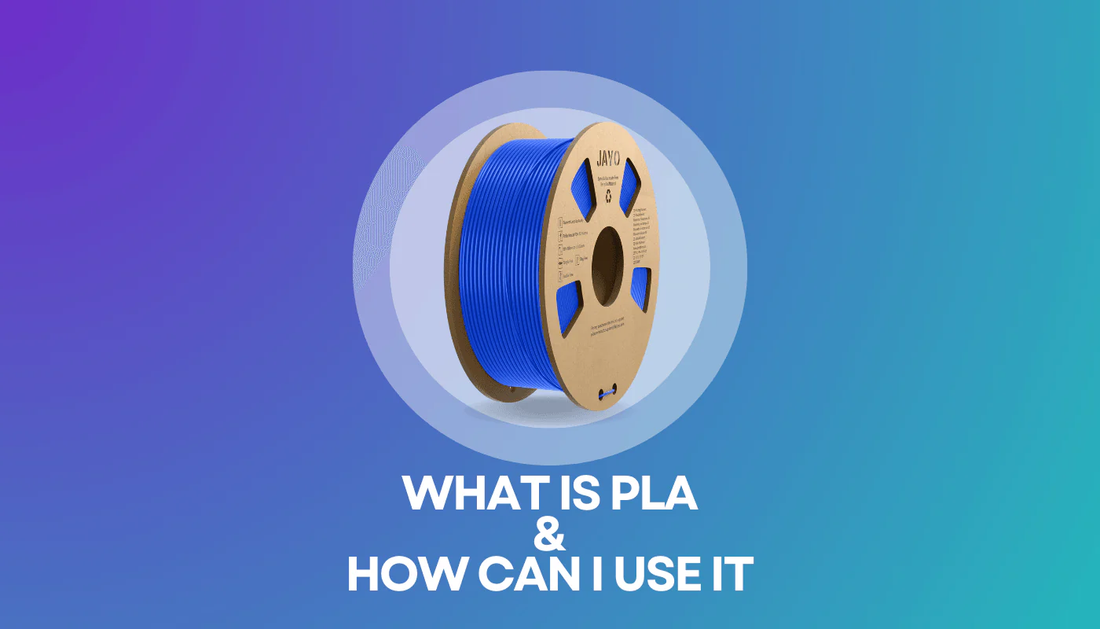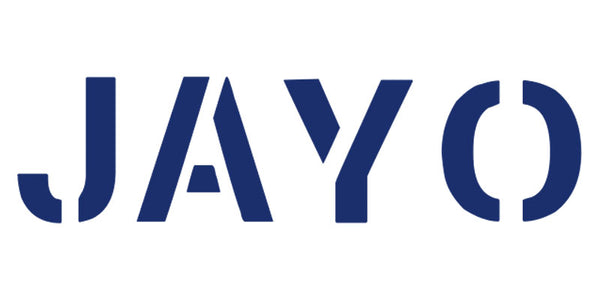
What Is PLA And How Can I Use It?
Share
Content
- What is PLA?
- How Does PLA Work?
- Is PLA Food Safe?
- Why is PLA a Great Choice for 3D Printing?
- Disadvantages of PLA
- Some Tips
- Conclusion
- Jayo PLA
If you are in the 3D printing industry, you might be familiar with PLA, which stands for polylactic acid. PLA is a biodegradable, plant-based 3D printer filament that has become increasingly popular in recent years. It is commonly used to make figurines, toys, and small household items. In this blog post, we will explore what PLA is, how it works, and why it is a great choice for 3D printing.
What is PLA?
PLA is a type of plastic that is made from renewable resources such as corn starch, sugarcane, or cassava. It is a popular material for 3D printing because it is easy to use, versatile, and environmentally friendly. PLA is a thermoplastic, which means that it can be melted and solidified repeatedly without losing its properties. This makes it an ideal material for 3D printing, as it can be melted and extruded through a 3D printer nozzle to create precise and intricate designs.How Does PLA Work?
PLA is typically used in a fused deposition modeling (FDM) 3D printer. FDM printers work by melting the PLA filament and extruding it through a nozzle onto a build platform. As the PLA cools, it solidifies and creates a layer of the 3D object being printed. The process is repeated layer by layer until the object is complete.
Is PLA Food Safe?
Unstained natural PLA is considered to be safe for food contact. In fact, some of the tools in your kitchen may already be made of it. One thing to keep in mind is that many desktop 3D printers use brass nozzles, which may produce pollutants. It's recommended to switch to stainless steel nozzles to reduce the possibility of absorbing harmful chemicals.
Another potential concern when using 3D printed objects for food is the risk of bacterial contamination. While PLA itself does not promote bacterial growth, the small crevices and porous surfaces of 3D printed objects can harbor bacteria if not properly cleaned and sanitized.
In summary, natural unscented PLA is generally safe for food contact, but it's important to consider other factors such as nozzle materials and cleanliness when using 3D printed objects for food-related purposes.
Why is PLA a Great Choice for 3D Printing?
PLA is a great choice for 3D printing for several reasons.
1. PLA is cheap, compared to other 3D printing filaments. - PLA is made from renewable resources such as cornstarch, sugarcane, or potato starch, making it more cost-effective than some other materials.
2. PLA is a biodegradable and reusable material. - PLA is a thermoplastic material, which means that it can be melted and reused multiple times without losing its properties. Moreover, it is biodegradable, which means that it can decompose naturally in the environment, reducing the waste accumulation.
3. PLA is easy to print. - PLA has a low melting point, which makes it easy to print on most FDM (Fused Deposition Modeling) printers.
4. PLA does not release harmful toxins when it is melted and extruded.
5. PLA is available in a wide range of colors and finishes, making it a versatile material for 3D printing.
6. PLA is the ideal choice for most 3D printing material companies.
7. Almost every FDM printer can use PLA to print. - PLA is compatible with most of the FDM printers available in the market, making it a versatile material for 3D printing.
8. PLA is the best 3D printing material for beginners, and it is recommended by most forums.
Disadvantages of PLA
Like any material, PLA has its drawbacks. Some of these include:
1. Limited Temperature Resistance: PLA has a low melting point and is not suitable for high-temperature applications. It softens at around 60-65°C and starts to degrade at around 100°C.
2. Brittle: PLA is a relatively brittle material compared to other filaments, which means it can break or crack easily if subjected to stress or impact. This can be a particular issue with thin or intricate prints.
3. Environmental Sensitivity: PLA is sensitive to moisture and can absorb water from the air, which can affect its print quality and cause issues such as clogs, bubbles, and other defects
4. Limited strength and durability: While PLA is a strong material, it may not be as durable as other materials like ABS or nylon, which can be problematic for certain applications.
5. Biodegradability can be a disadvantage: PLA's eco-friendliness can be a disadvantage in certain situations. For example, if you need a part that will last a long time or be exposed to harsh environments, the fact that PLA will biodegrade over time may not be desirable.
Some Tips:
While PLA is easy to use, there are some important things to keep in mind when printing with this material.
Firstly, PLA is more brittle than other filaments and can be prone to cracking if it is printed with a low infill percentage or printed too quickly. It is important to adjust the settings on your 3D printer to ensure that the print speed and infill percentage are appropriate for the model you are printing.
Another consideration when printing with PLA is the temperature of your printer bed. PLA has a tendency to warp when it cools, so it is important to keep your printer bed at the correct temperature throughout the printing process. You can use a heated bed to help prevent warping and ensure that your prints come out flat and smooth.
The last one is about its water absorption. When PLA is exposed to the environment, it absorbs moisture, causing it to expand in volume and gradually deteriorate. After about 3-6 mnths, it will become brittle and its physical strength will decrease, which can result in filament breakage or clogged nozzles during printing. Therefore, it is recommended to use the PLA filament within a month after unsealing.
To prevent deterioration, it is best to store PLA filament in vacuum-sealed bags with desiccants that absorb moisture. Sealed PLA can be stored for up to 2 years.
For slightly deteriorated filaments, they can be dried using a Sunlu filament dryer to remove moisture from filament and allow filament to print normally again.
Conclusion
PLA is a popular 3D printer filament that is easy to use, versatile, and environmentally friendly. It is a great choice for beginners and experienced 3D printing enthusiasts alike. While there are many other materials available for 3D printing, PLA remains a popular choice due to its ease of use and environmental benefits.
Jayo PLA
Why Choose Jayo PLA?
- Cardboard Spool and Plastic Spool Optional
- Tidy winding, not easy to knot.
- High quality, the filament diameter tolerance is ±2mm
